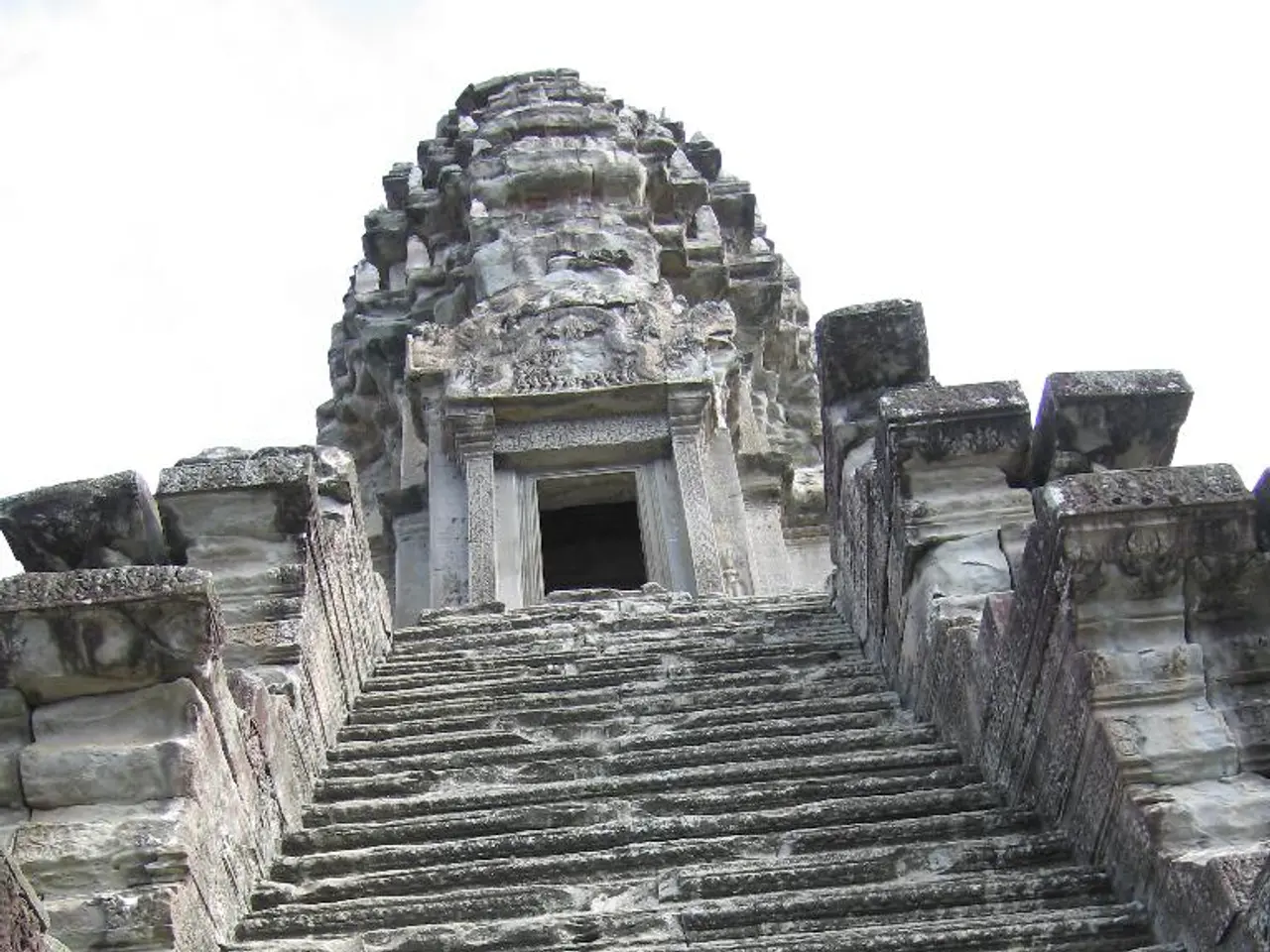Archaic relics unveil a Urartian citadel in Turkey, designated as a holy site dedicated to the deity Haldi.
Discovered Urartian Stronghold Reveals Secrets of Ancient Civilization
In the eastern province of Van, Turkey, the Korzut Fortress has been identified as a significant Urartian stronghold, known as Haldi Patari, meaning "the city sacred to Haldi." This revelation comes from recent archaeological excavations that have uncovered basalt tablets inscribed with the ancient name within a temple structure on the site.
The fortress, housing at least one temple dedicated to Haldi, the supreme deity of the Urartian pantheon, underscores its role as a sacred center in Urartian religion and culture. The presence of temple inscriptions highlights the place's spiritual and ceremonial function, offering a glimpse into the religious practices of the Urartian Kingdom.
The fortress's architectural and engineering sophistication is evident in the massive basalt stones used for its construction. Weighing between 6 and 12 tons each, these stones were quarried locally and demonstrate the builders' substantial technical skill and labor organization. Walls as wide as 9 meters were built to align with the terrain's slope, a testament to the advanced engineering that went into the fortress's design.
Excavations have brought to light critical architectural features, including a second temple, part of a palace entrance, and pathways connecting civilian areas to the central complex. These findings provide new understanding of Urartian urban planning and the integration of civic, religious, and military functions.
The site, inhabited over many centuries, including the medieval era, is marked by artifacts such as arrowheads from the Urartian period, 10th-century coins, and both glazed and unglazed ceramic fragments. These findings offer insight into daily life across centuries.
The archaeological team, led by Sabahattin Erdogan of Van Yuzuncu Yil University with the support of the Turkish Ministry of Culture and Tourism and local institutions, is preparing to move into a new phase focused on conservation. Erdogan emphasized that the next step will be to remove scattered debris and prepare the site for future preservation efforts.
Restoration projects are planned for the temple where the inscribed tablets were found. The site's architectural grandeur, according to Can Avci, an expert in ancient Near Eastern history from Istanbul University, would have projected security to residents and intimidation to enemies.
In summary, Korzut Fortress is now recognized not just as a military stronghold but as a large-scale, sacred urban center with monumental architecture and religious significance in the Urartian Kingdom. This discovery sheds light on their engineering prowess, religious practices, and city organization during the Iron Age. The conservation and restoration work at the site will help preserve this cultural heritage for future generations.
[1] Erdogan, S., et al. (2021). Preliminary Report on the 2020 Excavations at the Korzut Fortress, Eastern Turkey. Anatolian Studies.
[2] Avci, C. (2021). The Religious Significance of the Korzut Fortress in the Urartian Kingdom. Journal of Near Eastern Studies.
- Despite its historical significance as a military stronghold, newly found inscriptions reveal that the Korzut Fortress in eastern Turkey, also known as Haldi Patari, served a spiritual and ceremonial purpose in the Urartian civilization.
- The ongoing archaeological excavations in Turkiye, led by Sabahattin Erdogan, are set to move into a new phase, focusing on site conservation and further uncovering details about the lifestyle and home-and-garden aspects of the people who lived there.
- The Turkish Ministry of Culture and Tourism's support for Erdogan's team is part of an effort to preserve and showcase the Turkish heritage, which includes impressive home-and-garden architectural designs and economic innovation.
- The Ramsey Assemblage, discovered within the Korzut Fortress, provides evidence of the advanced engineering skills of the Urartian people, echoing their impact on the Turkish economy even thousands of years later.





